The three key elements, namely the city of Taipei, manhole covers, and rainwater are prominently featured to bring out the main highlight and inspiration for the project. Taipei Gorgeous Manhole Covers (“Taipei Gai Shui” in Mandarin) is a play on the Taiwanese Hokkien language’s harmony of “very beautiful” (gai suí) to carry a touch of local flavor and humor, indirectly emphasizing the desire of this project to bring a sense of belonging to the local community. And by employing a consistent composition technique of a bottom-up perspective, the project aims to transform the appearance of manhole covers into “the most close-up landscape,” turning around the public’s negative perception of manhole covers as dirty and unpleasant urban hazards. The project also encourages the public to explore the locations where manhole covers are installed from a different perspective, immersing themselves in the beauty of Taipei firsthand. This way, hydraulic engineering construction emanates warmth and conveys a softer emotion, achieving the concept of a leisurely urban aesthetic experience.

To enhance the urban landscape and create an aesthetically pleasing city as a key objective for the Taipei City Government, which is envisaged to be achieved by installing stormwater manhole covers featuring designs that are not only aesthetically pleasing but also reflect local characteristics and culture. These manhole covers will not only resonate with the local community and attract tourists but also contribute to the marketing of hydraulic engineering projects and the establishment of a brand image for the city government.
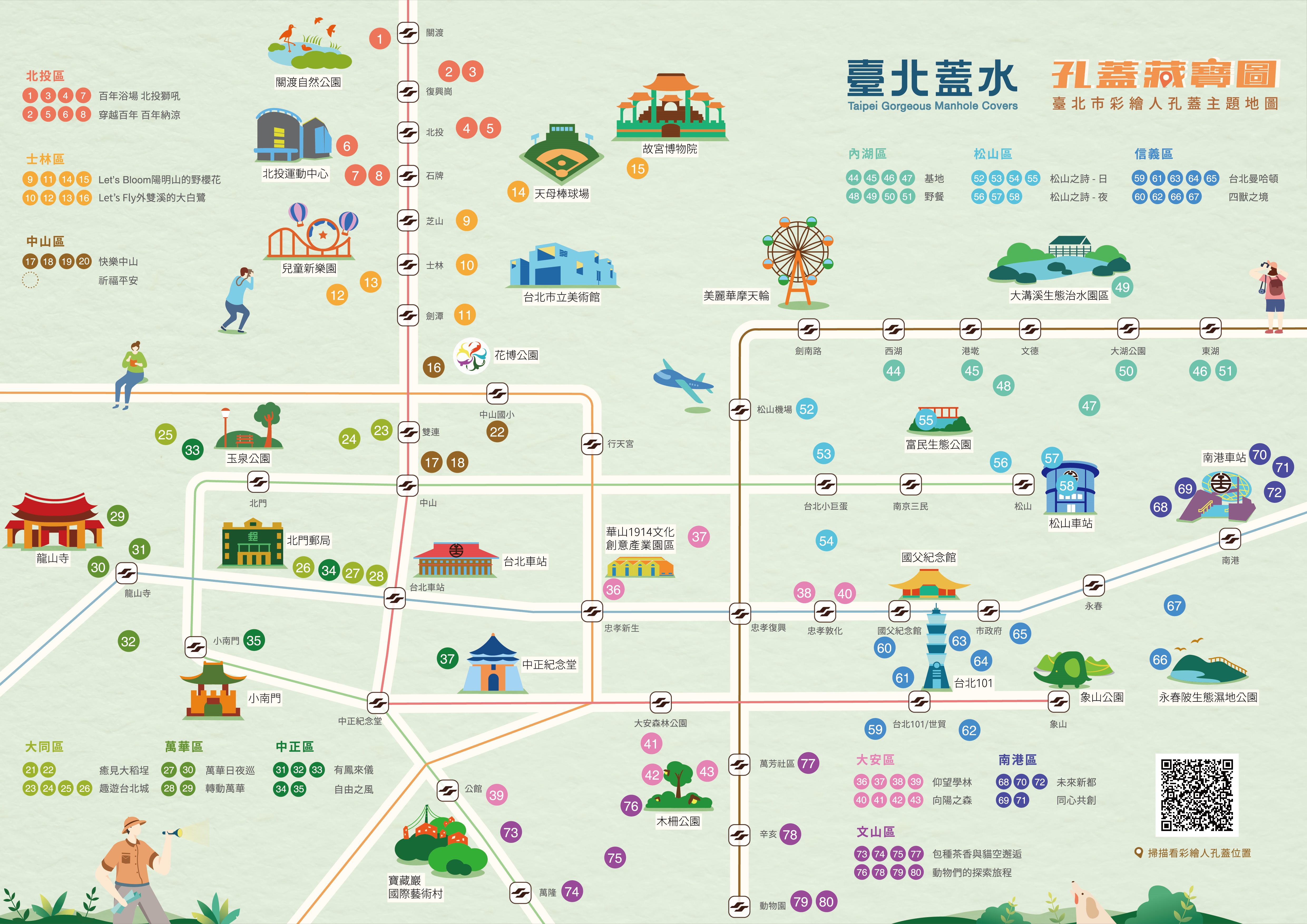
Sewerage construction in Taiwan can be traced back to the Qing Dynasty, when the Liugong Canal, Dayi Canal, and Shilin Fude Canal serving as rainwater and wastewater discharge infrastructure for the Taipei area. In 1895, during the Japanese colonial period, the Interior Ministry of the Government-General of Taiwan Office formulated the “Taipei City Drainage Works” project to improve public hygiene. This marked Taiwan’s earliest systematic urban rainwater and sewage drainage system construction. To date, the completion rate of Taipei City’s stormwater sewer system has reached 96.69%, which ranks the highest in the nation.
However, in tandem with urban development, many of the early open ditches and waterways have been either covered or converted into underground conduits. To facilitate access for inspection, maintenance, and cleaning of these underground water channels, manholes have emerged as critical features of the hydraulic infrastructure. According to the latest available statistics, there are nearly 16,000 stormwater manholes in Taipei City, of which 7,000 of these manholes have been relocated underground in accordance with the “Manhole Reduction” policy, while around 9,000 essential permanent manholes remain at street level.
With the widespread adoption of smart technology, since 2018 onwards, maintenance personnel can effortlessly locate Taipei City’s stormwater manholes and retrieve relevant information through a mobile app and geographic information system (GIS). This technological advancement has significantly improved the efficiency of maintaining and managing the city’s sewer infrastructure.
| Time | Design | Exterior |
| Before 1981s | An observation of the early stormwater manhole covers in Taipei reveals striking similarities with those found in some Japanese cities such as Tokyo and Kyoto. These manhole covers typically feature the city emblem at their center, employing geometric designs like concentric circles and radiating lines, symbolizing the sun. Some may even incorporate imagery reminiscent of the Imperial Japanese Army flag (Rising Sun Flag) during the period from 1889 to 1945. The city emblem at the center of these manhole covers has been in use since its introduction in 1916 and continued until 1981. It is a simplified variation of the Chinese character “北” (North) in small seal script, resembling pine needles, with a minimalist design featuring outward-curving sides and two vertical strokes in the middle, symbolizing determination and stability. According to historical records and oral accounts maintained by the Hydraulics Engineering Office (HEO), this emblem can be traced back to the earliest standardized stormwater manhole covers and is estimated to have a history of over 50 years. Such manhole covers have become increasingly rare on the city’s streets. |  |
| 1981s | According to the city emblem issued in 1981, this particular style of manhole cover can be identified as part of the first batch of planned and mass-produced stormwater manhole covers in Taipei City. The plum blossom shape on the manhole covers is closely associated with the Republic of China (Taiwan), with the circular element containing the integrated characters “北” (North) and “市” (City). The “北” character is highlighted in positive relief (yang carving), while the “市” character is depicted in negative relief (yin carving). Since this form of hole cover has a history of nearly 40 years, it has almost been completely replaced and is rarely found in alleys or more private places. | 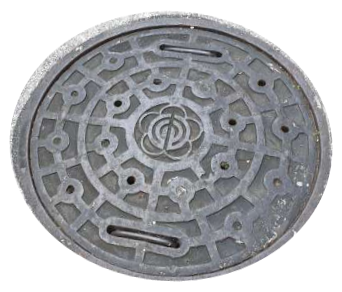 |
| 1991s | According to the city emblem on the cover, which has been in use since 1996, this type of cover should be the second batch of stormwater manhole covers mass produced for Taipei City. The familiar Taipei City emblem is written in brushstrokes with the character for “北” (North) in red, yellow, green, and blue from left to right, with the characters for “TAIPEI” in black and “台北” in grey at the bottom. At present, there are about 1,500 such manhole covers, which have been in place for more than 20 years, and have been the subject of active replacement by the HEO in recent years. | 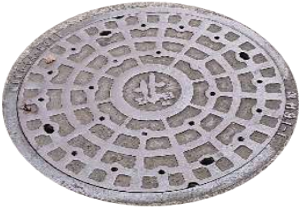 |
| 2004s | There is a growing trend of organizations dedicating efforts to the beautification and design of manhole covers, and are striving to incorporate local characteristics into these covers, breaking away from the monotonous and staid appearance, and ultimately achieving the goal of enhancing the city’s aesthetics. In 2004, the Taipei City Government Public Works Department’s Road Maintenance Office (the predecessor of the HEO) completed the graphic design of beautifying the manhole cover with the city emblem, the city flower (Rhododendron), the city bird (Taiwan blue magpie), and the Formosan swallowtail butterfly phoenix butterfly (Papilio thaiwanus) as the imagery. This form of manhole cover currently comprise the largest number of stormwater manhole covers in Taipei City, with about 4,600 currently across the whole city. | 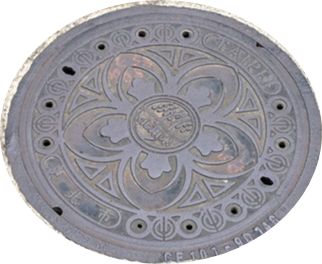 |
| 2013s | To address the issue of manhole covers being propelled into the air due to excessive vapor pressure from sudden heavy rainwater entering the drainage system, the HEO started replacing them with a new type of pressure-resistant manhole covers from 2013 onwards. The most significant difference between the new type of manhole covers and traditional ones is that when subjected to excessive pressure, the new manhole covers automatically rise by 2 centimeters, creating a gap to relieve pressure. The covers also feature a linking mechanism to prevent them from being propelled into the air and include noise-reducing designs. Currently, about 2,900 manhole covers of this type have been replaced in the downstream of various catchment areas, at the intersection of pipes and drains, and in areas of historical flooding, and will continue to be replaced in the future to effectively improve drainage and road safety. | 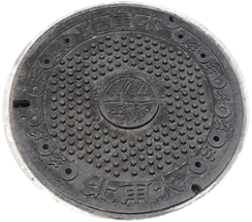 |
| 2013s | The earliest development of decorative and painted manhole covers is believed to have originated in Japan. This practice has not only become a tourist attraction but has also given rise to various forms of collecting culture. Recognizing the importance of public service aesthetics, the HEO completed the design of painted stormwater manhole covers with the theme of “Bringing Taipei to the World” through an open call for submissions and an online voting campaign in 2013. These covers feature an impressive depiction of the iconic Taipei 101 building, symbolizing the city’s grandeur. To date, the HEO has installed a total of 53 identical painted manhole covers in high-traffic flow areas, tourist attractions, and around MRT stations in Taipei City. | 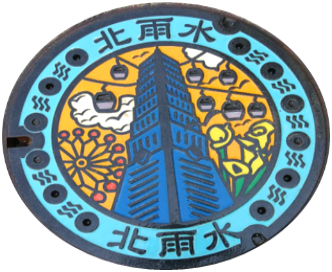 |
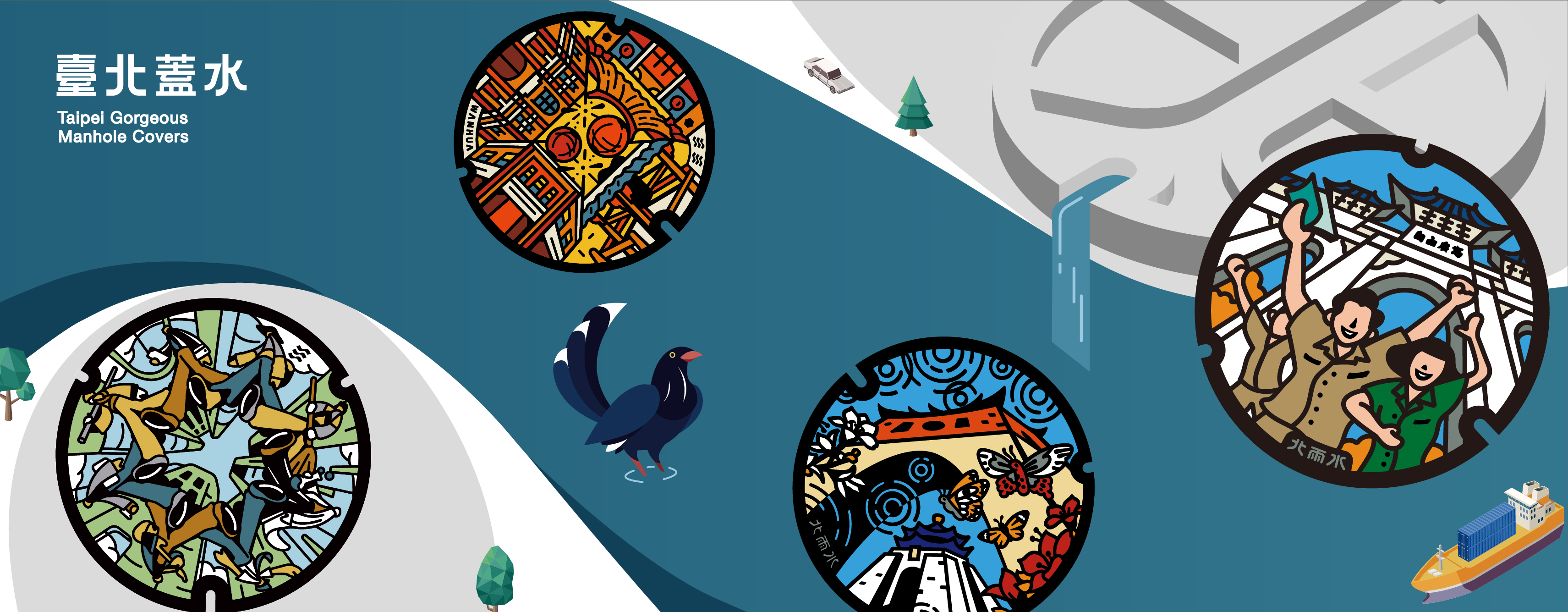
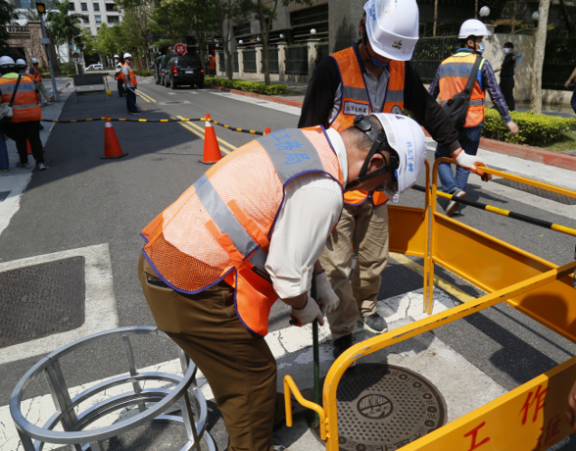
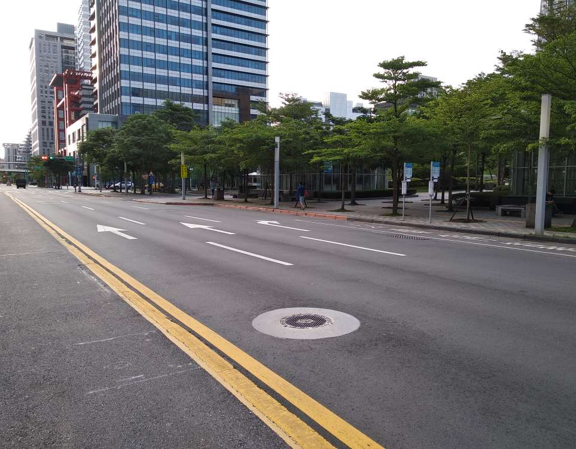





![Taiwan.gov.tw [ open a new window]](/images/egov.png)
